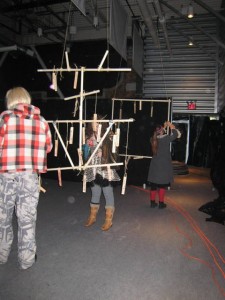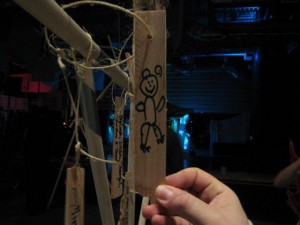The Japanese concept of kaizen was one management fad that swept manufacturing plants in the U.S. Under kaizen, workers are expected to continuously improve their work process for efficiency. Sounds good, right? However, researchers have documented how kaizen usually results in the intensification of work. Employees work an increasing number of tasks at maximum capacity at breakneck speed, often for little or no added rewards. Laurie Graham, who worked as a covert participant-observer at a car manufacturing plant that introduced kaizen, teamwork, and other new practices, argues that such practices are intended to enhance managerial control, without any corresponding benefits for the workers (see On the Line at Subaru-Isuzu: the Japanese Worker and the American Worker, 1995, ILR Press).
This past weekend, I finally saw creative use of kaizen for a higher purpose: inspiring thoughts about how we can re-imagine everyday urban life. Since the 2010 Burning Man theme is “Metropolis,” one artist set up a participatory art project at this year’s New York City Decompression, a post-Burning Man event. The artist provided instructions for kaizening life in NYC: think about how to improve NYC, write your suggestion on a shim, and tie your suggestion to one of three possible hanging sculptures. Most participants’ suggestions involved general mandates, such as more “love,” “improve the MTA (public transportation),” and “more cookies.” One of the few specific instructions, along with a drawing on the reverse, is below. Is Australia ready to make some exports?




